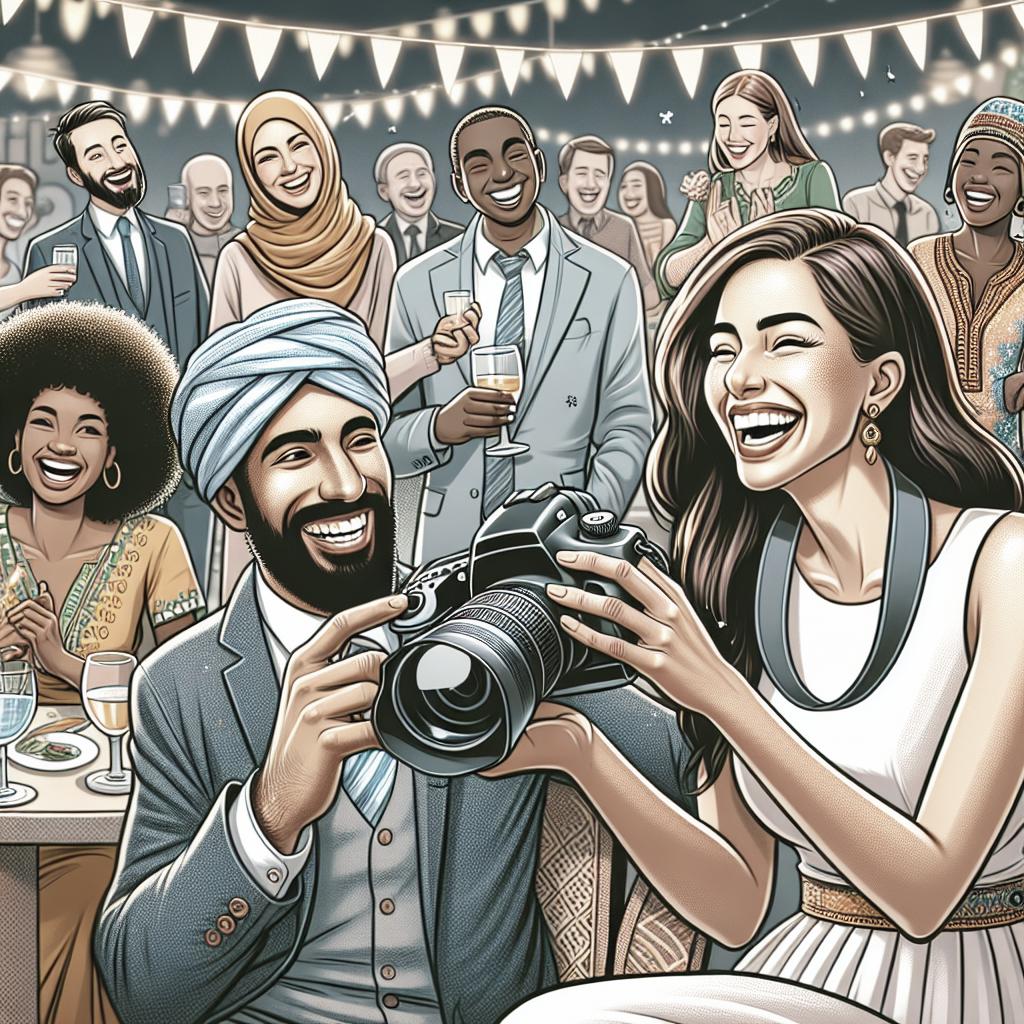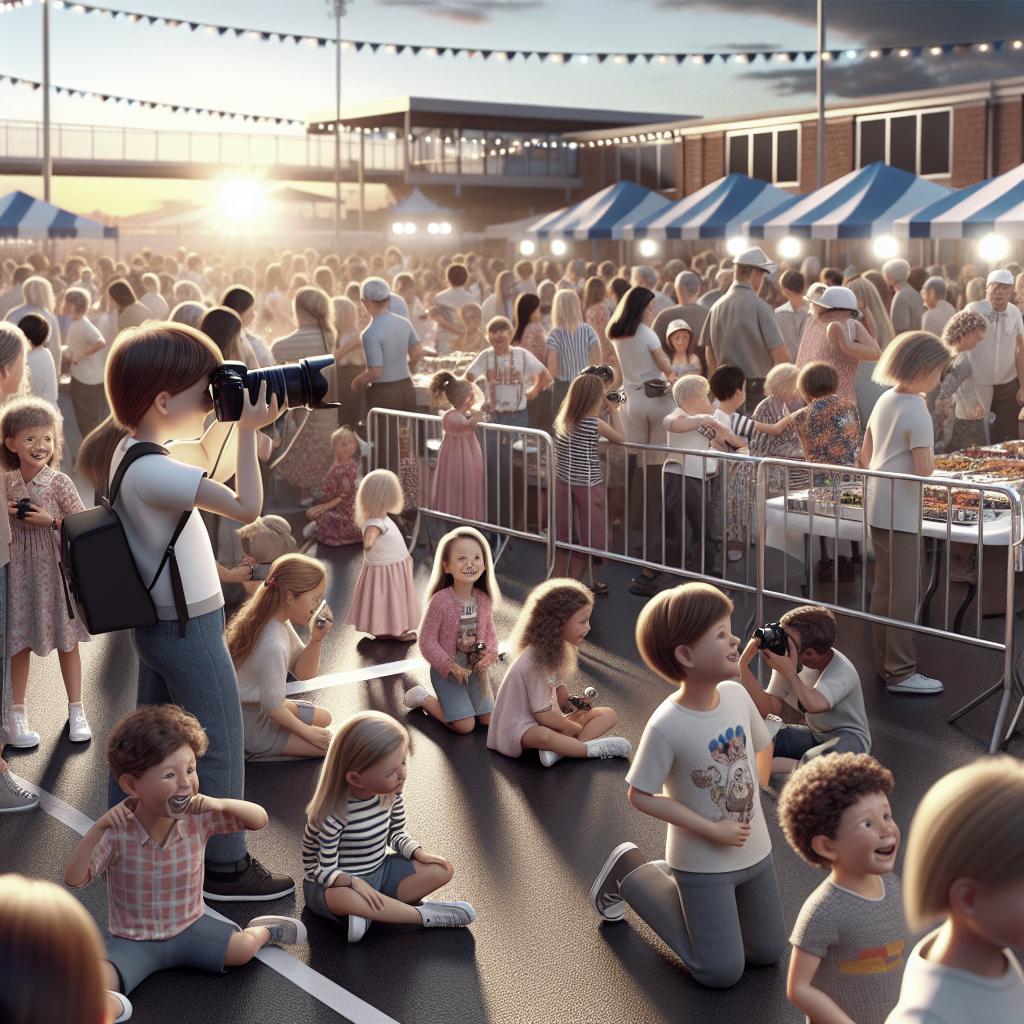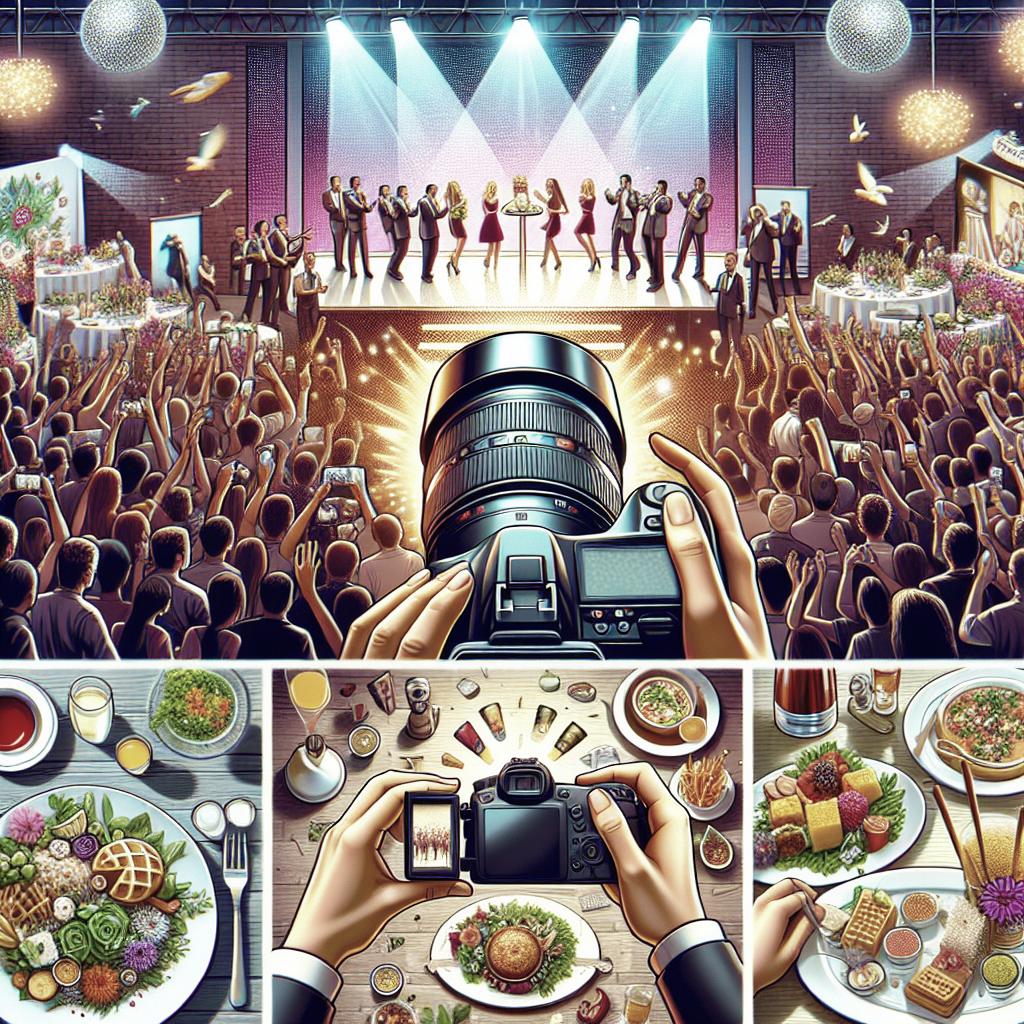<>
“`
Introduction
Capturing special moments at events is an art that combines technical skills, creativity, and emotional intelligence. Whether you’re at a wedding, corporate gala, or a birthday party, your ability to seize and immortalize these moments can be the difference between mediocre and exceptional event photography. This guide will walk you through the essentials of capturing candid moments, choosing the right equipment, communicating with clients, and much more. Read on to learn valuable insights that will elevate your event photography, making you a sought-after photographer.
How can I capture candid moments at events?
Candid photography revolves around capturing people in their natural, unposed states. To achieve this, blend into the background and observe. Look for genuine moments of laughter, joy, or even contemplation. Anticipate these moments by paying attention to interactions and knowing where to focus your lens. Mingling with guests can also make them comfortable and more natural in front of the camera.
Another effective strategy is to use a telephoto lens, which allows you to stay at a distance while capturing up-close shots without intruding on personal spaces. Rapid shot bursts can also be useful; it increases the chance of getting that perfect candid moment among several frames.
What equipment do I need for event photography?
Choosing the right equipment can greatly influence the quality of your event photography. A professional DSLR or mirrorless camera is essential, providing high-resolution images and flexibility in various lighting conditions. Opt for versatile lenses such as a 24-70mm for general shots and a 70-200mm for candid and portrait photography.
Additional equipment includes external flash units for better lighting in low-light scenarios, backup batteries to ensure you don’t miss crucial moments, and high-capacity memory cards. A sturdy, portable tripod can be handy for capturing sharp, stable images, especially during group shots or event speeches.
How can I communicate effectively with clients to understand their expectations?
Effective communication with clients is the cornerstone of successful event photography. Start with a comprehensive consultation to discuss their vision and key moments they want captured. Use a questionnaire to gather details about the event timeline, VIP guests, and any specific shots they desire.
Active listening is crucial; take notes and confirm your understanding by restating their requirements. Follow up with a detailed proposal or shot list to ensure both parties are aligned, and keep open lines of communication leading up to the event. This proactive approach builds trust and minimizes misunderstandings on the event day.
What should be included in a shot list for event photography?
A well-prepared shot list can significantly simplify your work at an event. Essential categories include venue shots, key moments (like speeches or toasts), and important attendees. Break these down further into must-have shots, like the exchange of rings at a wedding or the awarding ceremony at a corporate event.
Consider adding detail shots, such as decoration close-ups or candid photos of guests. Collaborate with your clients to prioritize these shots. A detailed shot list ensures nothing is overlooked, allowing you to focus on capturing those memorable moments without constantly worrying about missing something essential.
How can I avoid taking unflattering candid shots?
Capturing flattering candid shots involves a blend of timing, angles, and awareness of your subjects. Avoid taking photos while people are eating or in other potentially awkward situations. Focus on moments of natural interaction and joy, as these generally result in more pleasing images.
Use natural light to your advantage, since it is generally more flattering than artificial lighting. When using flash, diffuse it to soften shadows and avoid harsh lighting. Lastly, review your shots intermittently to ensure you’re capturing images that portray your subjects in the best possible light.
What are some tips for capturing pre-event photos of the venue and details?
Capturing the venue and details before guests arrive provides a quiet time to focus on setting the scene. Start with wide-angle shots to encompass the entire venue, showcasing its ambiance and layout. Pay attention to the lighting, ensuring it complements the setting.
Next, move on to detailed shots. Capture table settings, floral arrangements, and other décor elements that tell the story of the event. This not only provides a comprehensive view of the event but also highlights the effort put into creating a memorable atmosphere. These shots add a layer of depth and context to the event coverage.
Why is having a solid contract important for event photographers?
A well-drafted contract is crucial for protecting both you and your clients. It should clearly outline the scope of work, payment terms, and delivery timeline. Include clauses that cover cancellations, rescheduling, and what happens in case of emergencies.
This document serves as a formal agreement that sets expectations, reducing the risk of misunderstandings and disputes. Always have it reviewed by a legal professional to ensure it includes all necessary protections and complies with local laws. A solid contract depicts professionalism and provides a reliable foundation for your business relationships.
How can I show professionalism in event photography?
Professionalism extends beyond technical skills and encompasses your interactions and appearance. Dress appropriately for the event, adhering to any dress codes while ensuring comfort for mobility. Arrive early to familiarize yourself with the venue and prepare your equipment.
During the event, maintain a courteous and unobtrusive presence. Handle your equipment confidently but without drawing attention to yourself. After the event, follow up promptly and meet the agreed-upon deadlines for delivering the final images. Consistently demonstrating professionalism builds your reputation and can lead to repeat business and referrals.
How can I avoid obstructing guests’ views or interrupting them for photos?
Being discreet is key to capturing events without disturbing the flow. Use longer focal lengths to take close-ups from a distance, avoiding the need to stand directly in front of guests. Be mindful of staying out of the way during important moments, such as speeches or performances.
Communicate with event coordinators to understand the itinerary, allowing you to position yourself in the best spots without causing disruptions. If you need to arrange posed shots, do so during natural breaks or transitions to minimize interruptions. Ensuring guests feel comfortable and not intruded upon will result in more genuine photos and a better experience for everyone.
What is the best timing for delivering the final images to maintain the emotional investment of the client?
Timely delivery of final images helps maintain the emotional investment of the client. Aim to provide an initial preview or highlights within a week to keep the excitement alive. This can be a selection of edited photos that capture key moments and highlights of the event.
The complete album should ideally be delivered within 4-6 weeks, depending on the scope of work and the number of images. Clear communication about the timeline beforehand sets proper expectations and builds trust. Prompt delivery, paired with high-quality images, leaves a lasting positive impression on clients.
Next steps
| Section | Summary |
|---|---|
| How can I capture candid moments at events? | Blend into the background, use telephoto lenses, and rapid shot bursts to capture genuine, unposed moments. |
| What equipment do I need for event photography? | DSLR or mirrorless cameras, versatile lenses, external flash units, backup batteries, high-capacity memory cards, and a portable tripod. |
| How can I communicate effectively with clients to understand their expectations? | Hold a comprehensive consultation, use a questionnaire, and confirm details through active listening and follow-up proposals. |
| What should be included in a shot list for event photography? | Include venue shots, key moments, important attendees, must-have shots, and detail shots prioritized with client input. |
| How can I avoid taking unflattering candid shots? | Avoid shooting during awkward moments, use natural light or diffused flash, and periodically review your shots. |
| What are some tips for capturing pre-event photos of the venue and details? | Start with wide-angle shots and move on to detail shots of table settings, decorations, and other décor elements. |
| Why is having a solid contract important for event photographers? | Contracts outline the scope of work, payment terms, and include clauses for cancellations and emergencies to protect both parties. |
| How can I show professionalism in event photography? | Dress appropriately, arrive early, maintain courteous behavior, and follow up promptly with the delivery of images. |
| How can I avoid obstructing guests’ views or interrupting them for photos? | Use longer focal lengths, be mindful of key moments, and coordinate with event planners to position yourself discreetly. |
| What is the best timing for delivering the final images to maintain the emotional investment of the client? | Provide initial previews within a week and deliver the complete album within 4-6 weeks, keeping clear communication about timelines. |
“`


